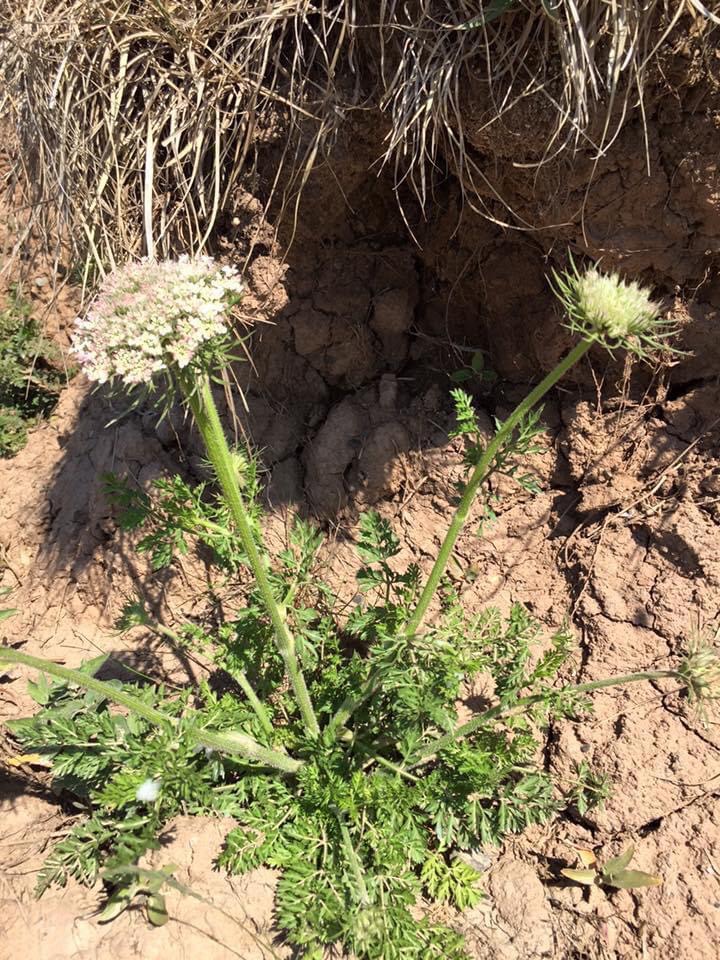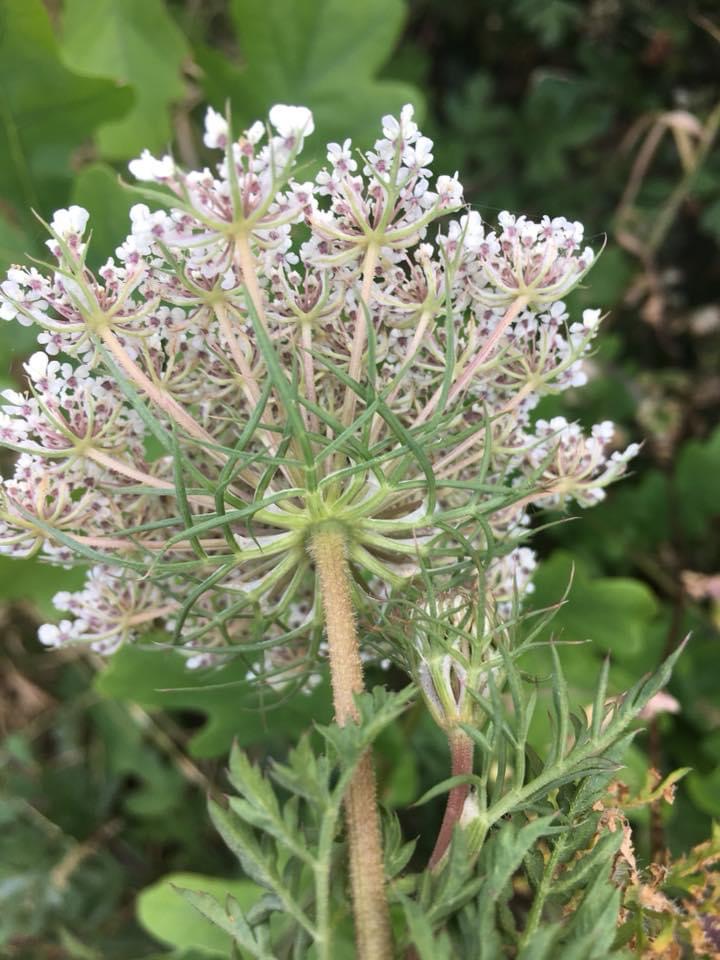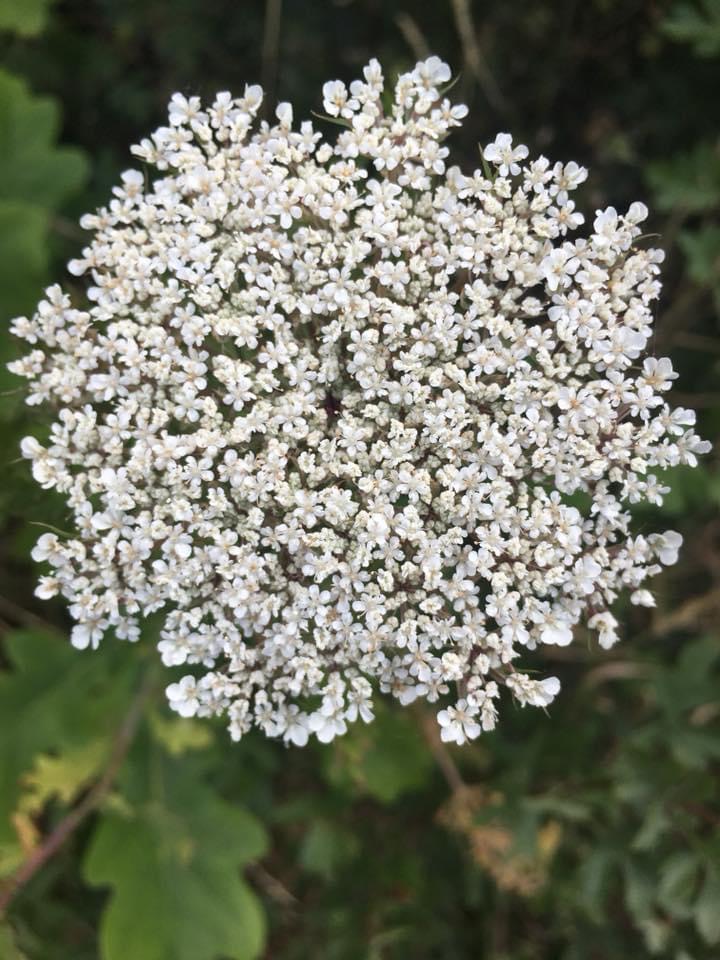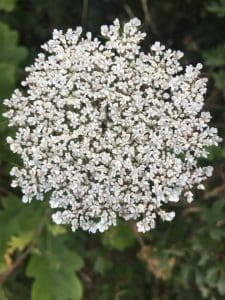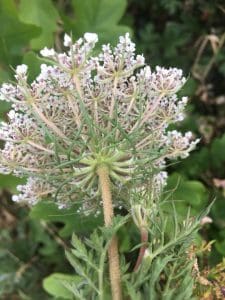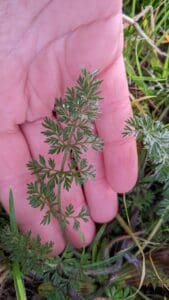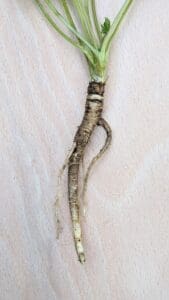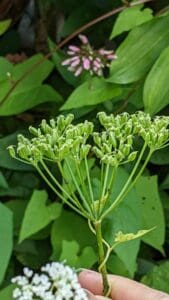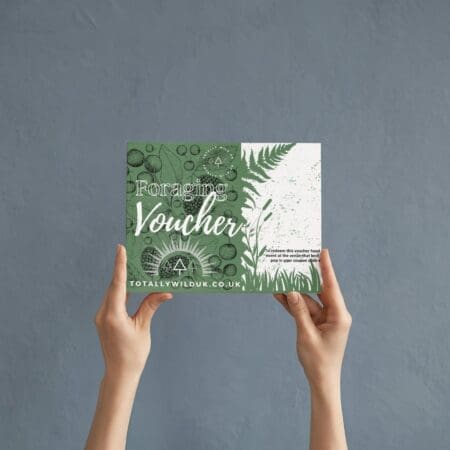Wild Carrot / Summer / Autumn / Edible
Common Names
Wild Carrot, Queen Anne’s Lace, Birds nest.
Botanical name
Daucus Carota
Scientific Classification
Kingdom – Plantae
Order –Apilaes
Family – Apiaceae
Physical Characteristics for Wild Carrot
Leaves
The leaves are tri-pinnate, finely divided, lacy and triangular in shape. The leaves are bristly and alternate. The upper side is smooth and the underside is covered in hairs
Flowers
The flowers are small and dull white, clustered in flat, dense umbels. The umbels are terminal and approximately 8–10 cm wide. They may be pink in bud and may have a reddish or purplish flower in the centre of the umbel. The red flower attracts insects.
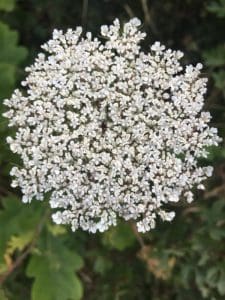
Seeds
The lower bracts are three-forked, which distinguishes the plant from other white-flowered umbellifer species.
The dried umbels detach from the plant and become tumbleweeds.
The seeds themselves are oval, flattened and covered with hooked spines.
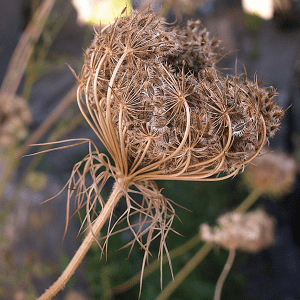
Roots
Off white and carrot-shaped, it is edible when young but soon becomes too woody and tough to eat. Depending on growing conditions it can become quite forked. Smells strongly of carrots.
Stems
A stiff, solid stem.
Habitat
Thought to originate in Afghanistan before spreading to Europe, it is the ancestor of our cultivated carrots. The familiar orange carrot was first developed in the Netherlands in the 17th century.
Chalk grasslands, coastal sites and waste ground. Less common inland.
Known Hazards
The leaves contain chemicals that can cause phytophotodermatitis, this occurs when the sap touches your skin and is then exposed to sunlight or UV rays. This causes irritation and blistering.
No part of this plant should be consumed by pregnant or breastfeeding mothers.
Could be Confused with
Other members of the umbellifer family such as Deadly hemlock (Conium Maculatum), so great care must be taken when foraging for this plant.
Wild Carrot is easiest to identify when it is in flower so it is best to observe it then and return the following year.
To learn more about the Carrot Family and how to ID them click here.
Edible Uses
The roots, even when young can be tough so it is best to use them as a flavouring. For example, boil them in a stock and then discard them before consuming.
The leaves can be eaten raw or cooked.
The flowers can be eaten raw or cooked and are lovely deep-fried in a tempura batter.
The seeds have a very distinctive taste and can be added to bread and stews.
Notes on Herbal Uses
Wild carrot or its seed oil is used for urinary tract problems, digestive problems, to induce menstruation, and for other conditions, but there is no good scientific evidence to support its use for any condition.
Extra notes from the Foragers
The history of Daucus carota and its cultivation in different parts of the world can be traced back through historical texts and artwork. Paintings from the 16th and 17th century provide information on carrots’ history. Studying such paintings shows that yellow or red roots were cultivated in Turkey, North Africa, and Spain. Orange roots were cultivated in 17th century Netherlands.
I imagine everyone has heard the saying “Carrots are good for your eyesight” or “Eating carrots helps you to see in the dark” this is down to some wartime propaganda. The RAF had a new secret – radar technology that was able to intercept the enemy bombers, which they wanted to keep secret so the RAF’s success was claimed to be a result of the vast quantity of carrots eaten by the pilots.



